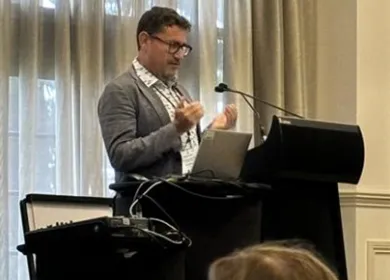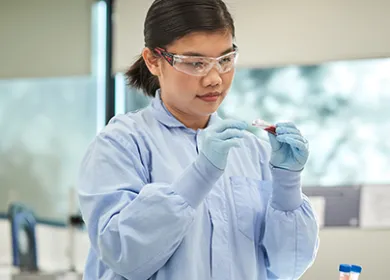Current projects
Long-term study of blood donor health
Lifeblood is committed to the health of blood donors. Studies that follow donors over a longer period of time and assess the differences in health outcomes according to donor characteristics can help us find any long-term differences in health outcomes for particular groups.
In the Australian Blood Donor Study (ABDS) pilot phase, we’re testing this approach for research into long-term health and donation-related behaviour. In the pilot phase survey, we’re also asking donors how they feel about donating blood for biobanking and broader research purposes.
Donating during a pandemic
The coronavirus pandemic has changed many things that our Lifeblood donors previously took for granted.
Donating is just one activity affected by the pandemic. Donors have been asked to follow Lifeblood's own guidelines for donating, as well as keeping up with changing Australian emergency guidelines and restrictions for behaviour more generally.
These guidelines mean different things for different donors. We want to ask how they feel about donating during this time, and find out how it affects their donation experience and behaviour. Our findings will help us support donors and provide the information they need to continue to donate safely.
Implementing applied muscle tension during plasma donation
Most donors feel fine when they donate, but some feel dizzy, lightheaded or nauseous (known as a vasovagal reaction). By tensing the major muscles in the legs and abdomen, donors can increase their blood pressure which prevents the vasovagal reaction.
We’ve shown this technique helps reduce these reactions in whole blood donations and now we want to find out how we can best introduce muscle tensing exercises for plasma donations.
Predicting adverse reactions
Vasovagal reactions, where a donor feels dizzy or faint, are the most commonly reported adverse reaction to blood donation.
This study will use a wearable device to help identify these reactions early on by measuring skin conductance and heart rate during the donation procedure. This study is a collaboration with Dr Philippe Gilchrist from Macquarie University.
Data linkage with the 45-and-up study
The frequency of chronic diseases such as cardiovascular diseases and cancer increase with ageing. In this study, known as the EDVLINK study, we've linked the data of a large population-based study in NSW called ‘The Sax Institute’s 45 and Up study’ with several external health-related datasets including our own blood donation-related information.
Through this data linkage, we’ve compared blood donors to similar health middle-aged and older adult non-donors, to see if there are differences in the chronic diseases, health outcomes and interactions with health services.
Donation, health and me
How donors feel about the effects of donation on their health is important for their wellbeing and influences their decisions about when to donate. We want to understand more about what donors think are the positive and negative health effects of donation so that we can provide relevant information and support.
We’re reviewing international research, and interviewing and surveying Australian blood donors to find out how donors’ perceptions relate to their donation experiences and behaviour. We can use this information to improve and personalise the donation experience.
Improving donor return following a vasovagal reaction
Feeling dizzy or fainting during a blood donation isn't much fun. We want to be able to help donors overcome these events by improving the way we manage these reactions at the centre as well as the way we communicate with donors after they leave.













